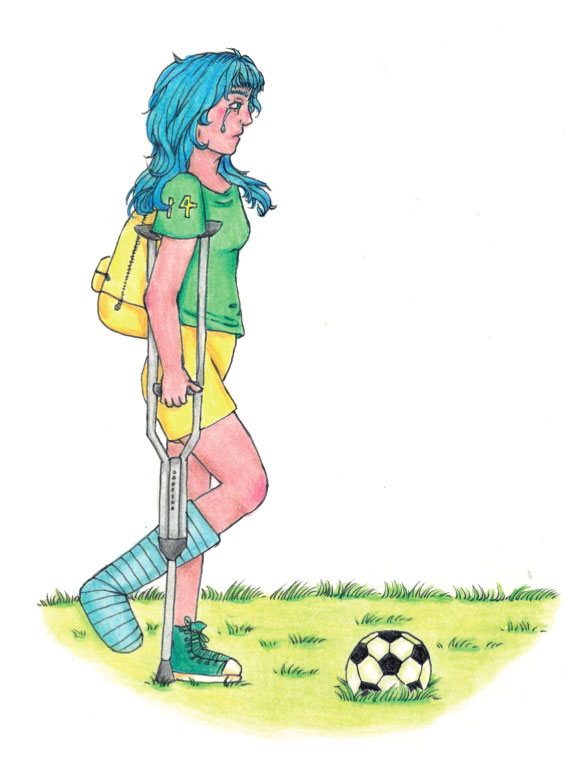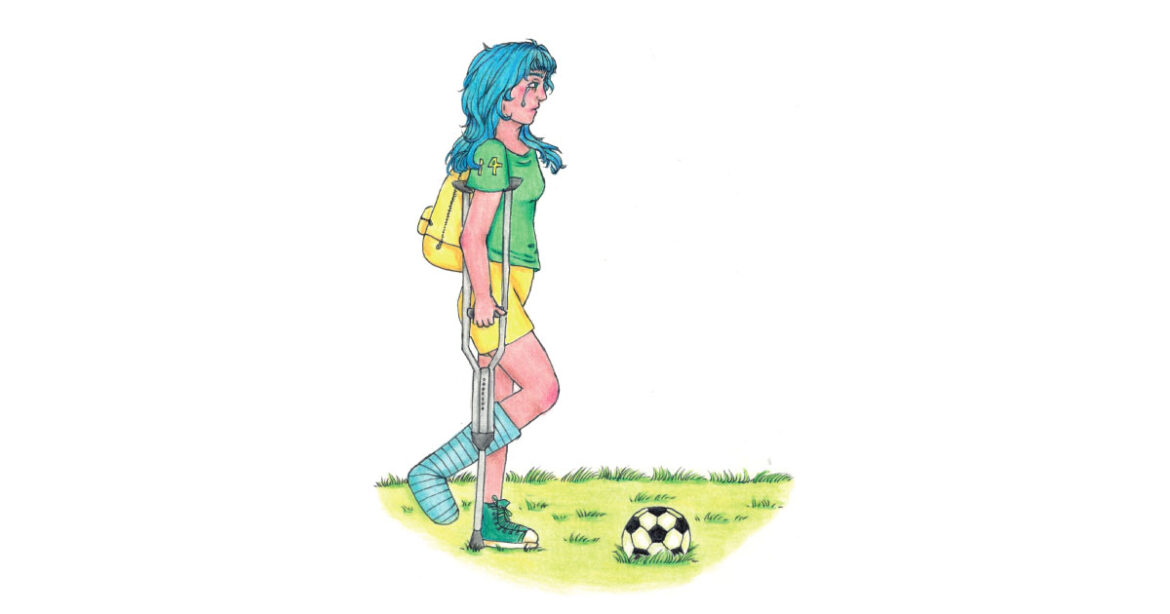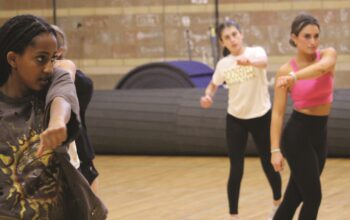
Roosevelt High School offers a variety of sports. In the fall, these sports include football, golf, cross country, girls’ soccer, girls swim & dive, volleyball, softball (slow pitch), cheerleading and boys’ water polo.
Injuries during high school sports are often unavoidable; even with proper warmup and preseason conditioning, injuries still occur.
Injuries seen most often in high school sports include sprains, strains, and overuse injuries. Ryan Sherlock, Athletic Director and football coach, claims the injuries he encounters most often are “simple bumps and bruises,” the occasional concussion, and the rare ACL injury.
For some athletes at Roosevelt, these injuries affect more than just their performance. Even the most common injuries can have a significant impact on an athlete’s mental health. Roosevelt football player Patrick Link, grade, said he felt “left out or disregarded” when on the sidelines after breaking his hip. Senior swimmer Britta Rindal was also sidelined by injury and said, “It was really frustrating especially because it’s senior year.”
While Rindal’s injury was outside of her normal swim practice, it was still near a pool. While working as a lifeguard over the summer, Rindal said, “I was on duty and I had the towel [shark towel] a little too far over my eyes and I was going a little too fast on some slick pavement.” A word of advice from Rindal would be: “Don’t wear a hooded towel on slick surfaces when you are dripping with water.”
Injuries during a sports season mean more to an athlete than simply not playing. Similarly, Sherlock’s entire identity in school was “Ryan Sherlock the football player.” Sherlock described himself as not being a “focused academic person.” He also said that “athletics was one of the main reasons that I came to school besides socializing with friends.” Sherlock also credits his current position at Roosevelt High School to football.
However, during his sophomore year of playing football in college, Sherlock was injured. He suffered from an overuse injury to his bicep that required a nine-month rehabilitation program which initially “ended [his] career.”
Sherlock had “a decision to make.” He had to choose between going back to playing for a team that improved without him or focus strictly on academics.
For many athletes, including Sherlock, sports are relied on for academic opportunities. Therefore, the effects of injuries can last longer than the initial impact; they can alter entire life courses. According to Sherlock, who focused on school after his injury, “If I wouldn’t have graduated, I wouldn’t be a teacher, I wouldn’t have a master’s degree, I wouldn’t have a teaching cert[ification], I wouldn’t be here at Roosevelt. It all revolved around athletics.”
Each athlete has their own goals for every season, ranging from getting a full ride to a preferred college, scoring a point, or blocking a shot. Sports create accomplishments and a sense of validation through success.
Injuries can cause athletes to feel discouraged. According to Rindal, “[I was] really excited to put in the work [and] get the times.” After being out most of the season, Rindal claims that not being able to swim was “really discouraging.”
Link described his goals set at the beginning of the season ultimately affected by his injury, “[I wanted to] start at least one position or be a backup [or] score a touchdown.” After his hip injury this was no longer possible.
Aside from personal reactions — expectations set by parents, coaches, and the community can heavily affect an athlete’s mental health, especially if expectations are not met or exceeded. Possible negative effects of unattainable expectations can be avoided by setting goals that are “specific, measurable, attainable, realistic, and time oriented,” according to Sherlock.
Aside from not meeting expectations, injuries are often a very big change in an athlete’s life and can be hard to adapt to.
After injuring his hip, Link stated that “I still like to go to the sport, and I still like to be a part of the team but it’s harder to go because you don’t get the same satisfaction of playing.”
Rindal compared swimming to battling anxieties, describing the same satisfaction as Link. “It’s like a good vent, I can get a lot of things out in the pool. When I get out my head is so clear.”
Both players can no longer play to the extent that they wish, due to their injuries.
As a coach, Sherlock’s advice for any athlete experiencing an injury would be “just to stay the course, check in, do your rehab — the best thing you can do is stay with the team. Find a role within that team that can help the team be successful.”
Links advice from athlete-to-athlete was to “take it slow in the recovery, don’t try to rush it.”
Follow The Roosevelt News on Instagram @therhsnews. Questions, comments, or concerns? Contact the Editorial Board at therooseveltnews@gmail.com.
Your voice matters. Share your thoughts and experiences in the comment box below.



